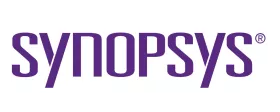Synopsys and Alchip Collaborate to Streamline the Path to Multi-die Success with Soft Chiplets
By Manmeet Walia (Synopsys), Manuel Mota (Synopsys), Erez Shaizaf (Alchip)
The shift from monolithic to multi-die design is inevitable — but that's not to say it's straightforward. Traditional monolithic design has clear limitations. Diminishing yield and high cost-per-die become issues when a design nears reticle limits. At this point, multi-die integration can break the system into a series of smaller dies and to overcome scale and cost issues of scale.
Hyperscalers and other high-performance computing companies have noted that chiplets enable collaborative design within a multi-die context that delivers cost advantages and "mix-and-match integration” across heterogeneous IP blocks. Unfortunately, the chiplet ecosystem has yet to be completely standardized. Chiplet-based design incurs challenges around packaging, power delivery, verification, timing, floor planning, security, testability, and thermal management.
Together with Alchip Technologies, a high-performance computing and AI ASIC company, Synopsys addresses these issues to deliver the ROI and physical benefits of a multi-die design.
Chiplet Flexibility for Multi-Die Chip Design
This Synopsys-Alchip collaboration combines decades of IP and EDA development and expertise. Synopsys provides silicon-proven and complete IP such as 112G and 224G Ethernet, PCIe 6.0, PCIe 7.0, and UCIe, as well as industry-leading design and verification EDA tools. Alchip contributes its high-performance computing (HPC)-optimized physical design methodology, large-scale high-speed interface IP integration, and 2.5D advanced package design capabilities.
The growing demand for IO and memory chiplets—small integrated circuits (IC) that combine with other chiplets to make up a bigger system-on-chip (SoC)—drives the collaboration. The process calls for carving out the functionality contained within a monolithic die and transferring it to a smaller companion unit.
To read the full article, click here
Related Chiplet
- Interconnect Chiplet
- 12nm EURYTION RFK1 - UCIe SP based Ka-Ku Band Chiplet Transceiver
- Bridglets
- Automotive AI Accelerator
- Direct Chiplet Interface
Related Blogs
- Synopsys and Alchip Accelerate IO & Memory Chiplet Design for Multi-Die Systems
- A Beginner’s Guide to Chiplets: 8 Best Practices for Multi-Die Designs
- Why Chiplets Are Key to Next-Gen Software-defined Vehicles
- What are chiplets?
Latest Blogs
- Bosch and the chiplet revolution: Enabling software-defined mobility
- Addressing the Biggest Bottleneck in the AI Semiconductor Ecosystem
- Thermal Management in 3D-IC: Modeling Hotspots, Materials, & Cooling Strategies
- 3D Chips: Socionext Achieves Two Successful Tape-Outs in Just Seven Months
- Intel Foundry Collaborates with Partners to Drive an Open Chiplet Marketplace
